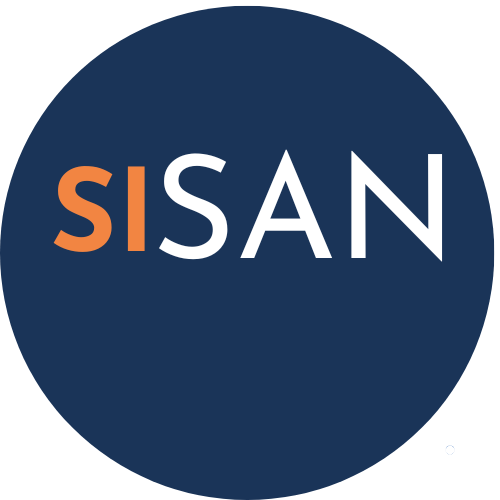Fewer, Smarter, Broader
The End of SKAGs and the Rise of AI Max: How Google Ads Targeting Is Evolving
If you’ve been running Google Search campaigns for a while, you probably remember the glory days of SKAGs (Single Keyword Ad Groups). They were once the gold standard for control and precision. But in today’s AI-driven Google Ads environment, SKAGs are more of a relic than a best practice.
Why SKAGs No Longer Work
Over the past year, Google’s algorithm has evolved dramatically. Here’s why overly fragmented keyword structures are now counterproductive:
- Close Variants Have Taken Over
Even exact match keywords now trigger queries with similar intent. That tight control SKAGs promised? It’s gone. - Smart Bidding Needs Data Volume
When you split your campaigns into tiny ad groups, you starve Google’s machine learning. It needs volume to optimise effectively. - Automation Bias Is Real
Google’s system favours broader match types paired with Smart Bidding. It’s designed to find converting queries, not micromanage them
What Works Now: Intent-Based Structures and Match Type Mix
Instead of obsessing over single keywords, modern PPC strategies focus on themes and intent. Here’s how to structure your campaigns in 2025:
Consolidated Ad Groups by Intent
Group keywords that share the same user goal. For example:
- “Buy PPC services” can include:
- “hire PPC agency”
- “Google ads specialist”
- “Website development” can include:
- “web design company”
- “hire website developer”
This approach gives Smart Bidding enough data to learn and scale while reducing management overhead.
Match Type Strategy
- Broad Match (with Smart Bidding): Great for scaling and discovering new queries
- Phrase Match: Ideal for controlled expansion
- Exact Match: Use sparingly for high-value, precision-critical terms
Responsive Search Ads with Asset Pinning
RSAs are now the default. You can pin key messages if you have brand or legal requirements, but otherwise let Google mix and match for performance.
Keyword and Campaign Structure Recommendations
- Campaign Setup
- One campaign per major product or service category
- Two to four ad groups per campaign, each focused on a tightly related intent
- Keyword Count
- Broad or Phrase Match: Three to eight primary keywords per ad group
- Exact Match: One to three high-value terms
- Negative Keywords
- Still essential, review search term reports regularly
- Use shared negative lists across campaigns
What is AI, Max?
AI Max is Google’s latest upgrade to Search campaigns. It’s not a completely new feature; it’s more like a smart bundling of existing tools (like DSA, broad match, and Smart Bidding) with added automation and control.
What AI Max Actually Does
- Uses generative intent modeling to go beyond keywords
- Auto-generates headlines and descriptions
- Expands final URLs dynamically
- Offers location and brand controls
- Adapts in real time to user behavior and search context
Advantages of AI Max
- Captures broader, conversational search intent
- Replaces piecemeal setups like DSA and broad match with one unified system
- Includes granular controls like geo-targeting and brand inclusion or exclusion
- Enhanced reporting: asset performance, search term detail, placement breakdown
Trends in Google Ads Right Now
Here’s what’s shaping the PPC landscape in 2025:
Responsive Search Ads Are the Standard
AI now optimises ad combinations in real time. Pin assets only when necessary for brand consistency or compliance.
Smart Bidding Is Non-Negotiable
Manual bidding is nearly extinct. Most advertisers rely on Maximise Conversions, Target CPA, or Target ROAS, feeding Google clean conversion data to let automation do the heavy lifting.
Consolidated Campaign Structures
SKAGs are out. Broader ad groups with strong intent signals help Smart Bidding learn faster and perform better.
Performance Max for Full-Funnel Reach
Advertisers are layering in PMax campaigns to capture demand across Search, Display, YouTube, and Shopping—especially for eCommerce and lead generation.
First-Party Data and Audience Signals
With privacy changes, CRM lists, website behaviour, and custom segments are now essential for guiding automation.
Creative Testing at the Asset Level
Instead of testing entire ads, marketers now test individual headlines, descriptions, and images to find winning combinations faster.
AI Max: Considerations and Best Practices
While AI Max is powerful, it’s still early-stage. Here’s what to watch out for:
- Campaign Cannibalization
AI Max can overlap with existing Search or PMax campaigns. Monitor performance and avoid duplication. - Transparency Is Improving
Google now offers better reporting, placement breakdowns, asset-level insights, and budget allocation visibility. You can see where your money’s going and where it’s working. - Enable Selectively
Start with a few campaigns. Monitor landing page alignment, track performance, and keep control flags in place.
What This Means for You
Google Ads is evolving fast, and AI Max is a clear signal that automation, intent, and data volume are the new pillars of success. Whether you’re a freelancer, agency, or small business owner, adapting your strategy to these changes isn’t optional; it’s essential.
If you’re still clinging to SKAGs or manual bidding, it’s time to let go. The future of paid search is smarter, faster, and more dynamic than ever.

0 Comments